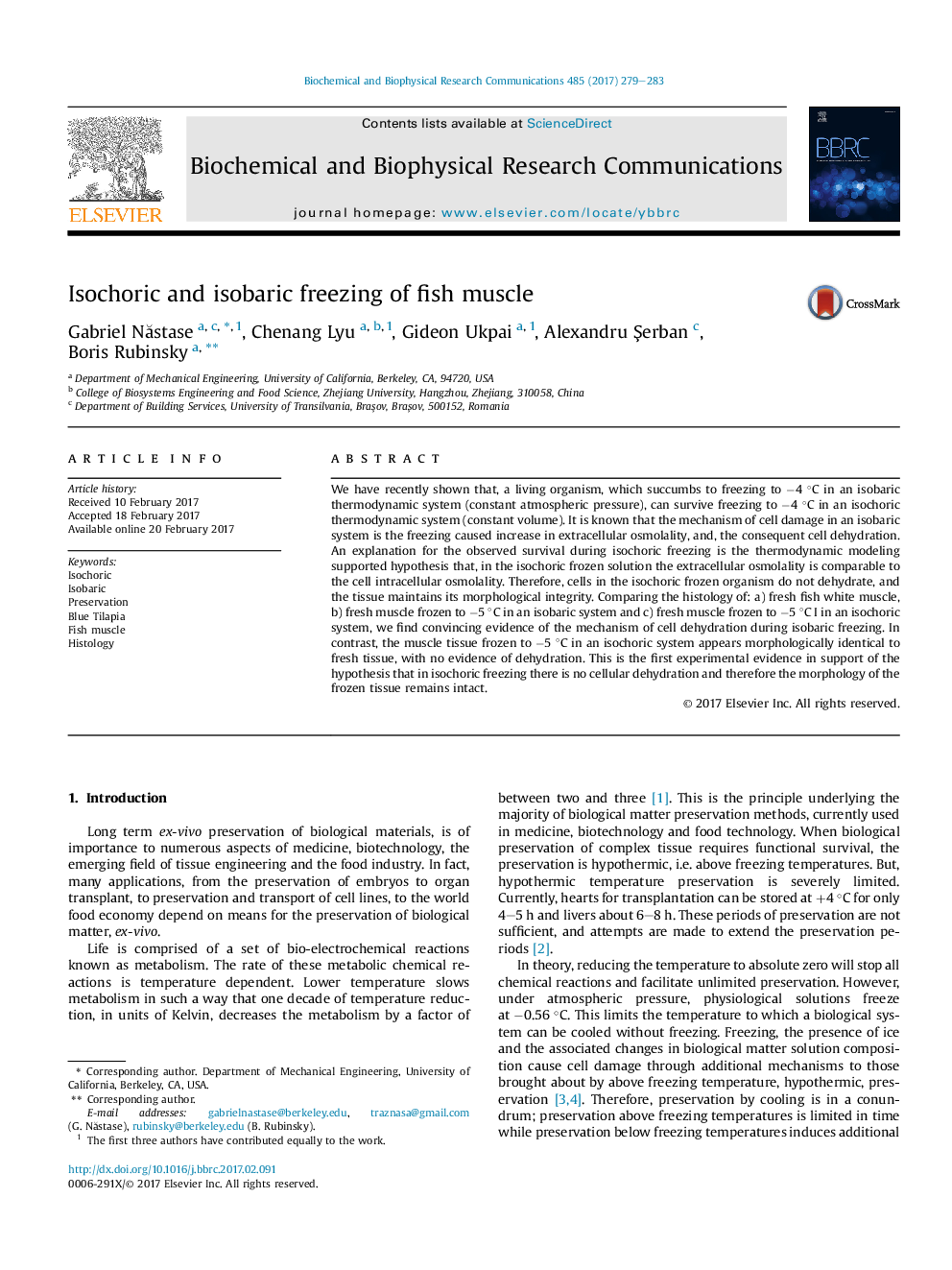| Article ID | Journal | Published Year | Pages | File Type |
|---|---|---|---|---|
| 5506162 | Biochemical and Biophysical Research Communications | 2017 | 5 Pages |
Abstract
We have recently shown that, a living organism, which succumbs to freezing to â4 °C in an isobaric thermodynamic system (constant atmospheric pressure), can survive freezing to â4 °C in an isochoric thermodynamic system (constant volume). It is known that the mechanism of cell damage in an isobaric system is the freezing caused increase in extracellular osmolality, and, the consequent cell dehydration. An explanation for the observed survival during isochoric freezing is the thermodynamic modeling supported hypothesis that, in the isochoric frozen solution the extracellular osmolality is comparable to the cell intracellular osmolality. Therefore, cells in the isochoric frozen organism do not dehydrate, and the tissue maintains its morphological integrity. Comparing the histology of: a) fresh fish white muscle, b) fresh muscle frozen to â5 °C in an isobaric system and c) fresh muscle frozen to â5 °C I in an isochoric system, we find convincing evidence of the mechanism of cell dehydration during isobaric freezing. In contrast, the muscle tissue frozen to â5 °C in an isochoric system appears morphologically identical to fresh tissue, with no evidence of dehydration. This is the first experimental evidence in support of the hypothesis that in isochoric freezing there is no cellular dehydration and therefore the morphology of the frozen tissue remains intact.
Related Topics
Life Sciences
Biochemistry, Genetics and Molecular Biology
Biochemistry
Authors
Gabriel NÄstase, Chenang Lyu, Gideon Ukpai, Alexandru Åerban, Boris Rubinsky,
